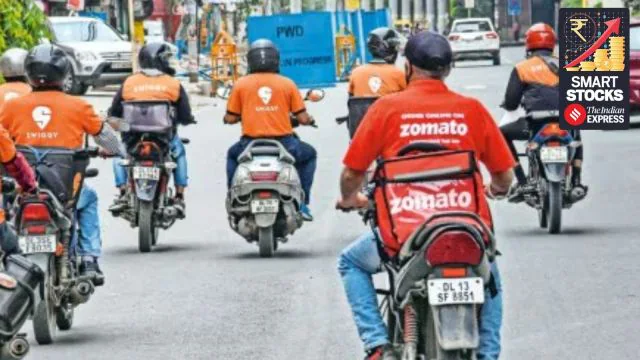Food Delivery to Get Costlier with 18% GST, But Ride-Hailing Apps Still Stuck in Tax Confusion

Image via The Indian Express
Date: September 7, 2025 — The Goods and Services Tax (GST) Council has taken a firm decision on food delivery, but ride-hailing apps are still left in uncertainty. The new rules will make ordering food more expensive, while taxi apps like Ola and Uber continue to face confusion about how GST applies to their business models.
Food Delivery Now Under 18% GST
The GST Council, in its recent meeting, announced that delivery services offered by food apps such as Zomato, Swiggy, and Blinkit will attract 18% GST. This will come into effect from September 22, 2025.
So far, food delivery platforms were only paying 5% GST on restaurant services. The delivery fee charged separately to customers was not taxed in the same way. Now, delivery will be seen as a separate service and taxed at the higher 18% rate.
This change is expected to increase the cost of food orders for millions of Indians. For example, if a delivery charge is ₹30, the tax alone will add around ₹5 more. That extra cost is likely to be passed on to the customer.
Financial Burden on Food Tech Giants
Industry reports suggest that this move could cost major platforms like Zomato and Swiggy ₹180–200 crore every year. Some experts believe the combined annual tax hit for the industry could even go as high as ₹500 crore.
To manage this, companies are looking at two options. First, they may increase delivery charges for customers. Second, they could reduce incentives or payouts to delivery partners. Neither option is popular. Customers do not want to pay more, and delivery workers are already unhappy with shrinking earnings.
According to analysts, Zomato may see an additional cost of about ₹2 per order, while Swiggy could face around ₹2.6 per order. These numbers may look small, but given the millions of orders handled daily, the impact will be huge.
Ride-Hailing Apps in GST Limbo
While food delivery has received clarity, ride-hailing platforms like Uber, Ola, and Rapido are stuck in confusion. Their main challenge is the difference between commission-based models and subscription models.
- In the commission model, apps take a cut from each ride. GST at 5% is applied, and the process is straightforward.
- In the subscription model, drivers pay the platform a fixed fee to use the app. Passengers then pay drivers directly, sometimes in cash. The question is: who collects GST in this case?
Confusion has grown because of contradictory rulings.
- In November 2024, the Karnataka Authority for Advance Ruling (AAR) said that Uber must still collect and pay 5% GST, even if it uses the subscription model.
- But in September 2023, the same AAR ruled that Namma Yatri, another ride-hailing platform, did not need to collect GST from passengers since it only acted as a middleman.
This has left companies confused about how to comply with tax laws. Should they register for GST in every state? Should they only collect in certain cases? No clear answer exists yet.
Why It Matters
The new tax rules show two very different pictures:
- Food delivery apps now face certainty, but at a high financial cost. Prices for customers will rise, and workers may earn less.
- Ride-hailing apps, on the other hand, are stuck in legal disputes with no clear rulebook. This creates risk for companies and drivers alike.
The GST system was meant to bring uniformity. But the opposite is happening in the digital economy, where similar services are being treated differently.
What Lies Ahead?
For food delivery, one thing is clear: orders will get costlier from September 22. Customers may think twice before ordering small meals. Companies may also redesign their pricing strategies, possibly introducing subscriptions or loyalty discounts to soften the blow.
For ride-hailing, the future is less clear. The government or the GST Council will likely need to step in with a uniform clarification. Until then, companies like Uber and Ola will continue operating in a gray area.
Conclusion
The GST decision has created winners and losers. Customers lose because food will cost more. Platforms lose because they face higher taxes. Delivery partners may also lose because their pay may shrink.
As for ride-hailing, the uncertainty continues. Without a clear ruling, both companies and drivers remain in doubt. The hope now is that the government brings one clear policy for all digital service providers.
For now, India’s GST story shows that while some sectors face heavy new taxes, others remain stuck in confusion.